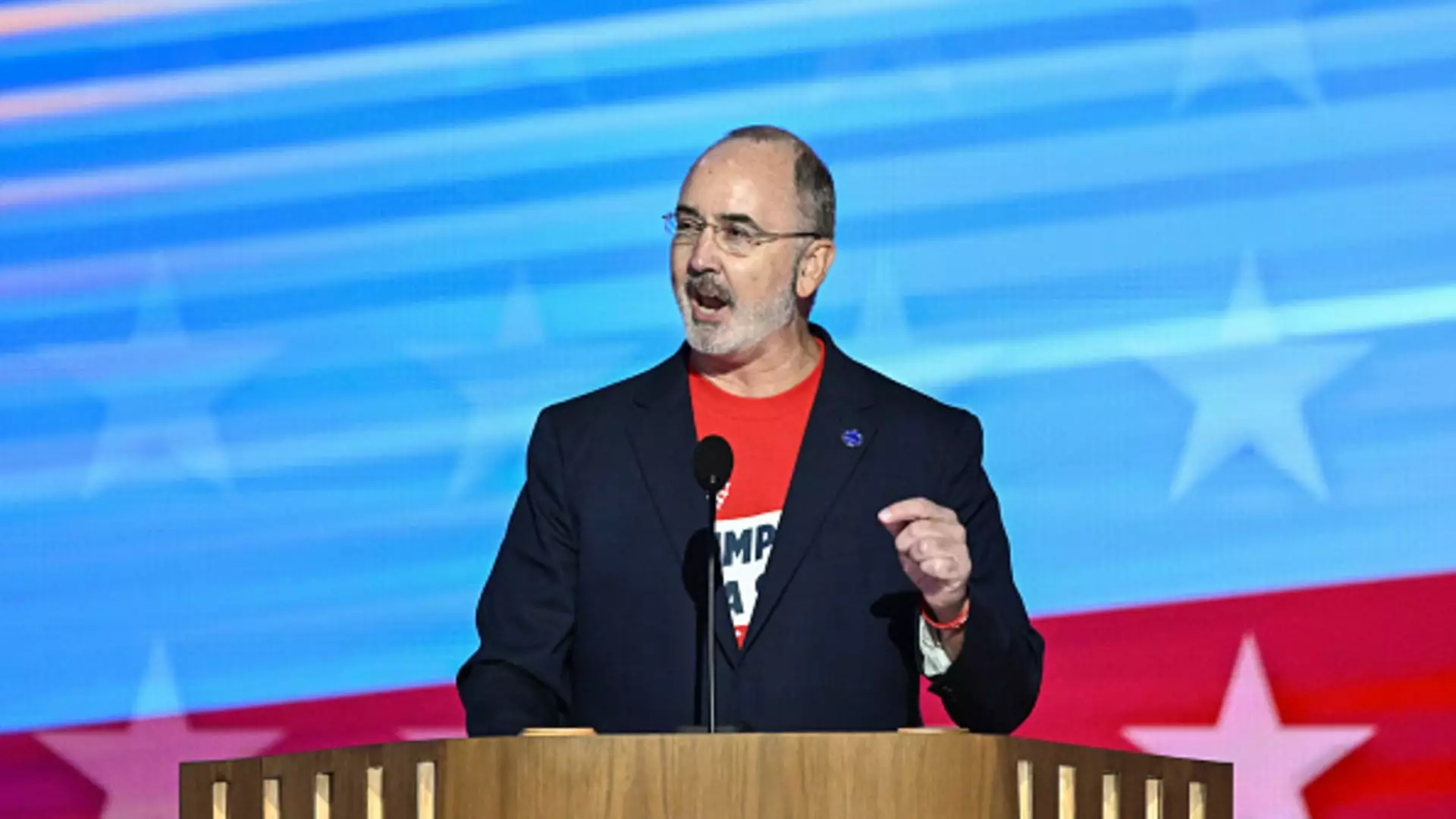In the evolving landscape of American politics and labor, one of the most stunning developments has emerged from an unexpected source: the United Auto Workers (UAW). Historically a stronghold of progressive dissent against the policies of Donald Trump, the union, under the leadership of Shawn Fain, has embraced tariffs that target car imports. This realignment could signal a significant shift in how labor interests view protectionist measures versus global trade agreements. Fain’s remarks acknowledging the necessity of tariffs as a means to revive American jobs expose a dissonance within the labor movement that many did not foresee.
Fain’s transformation from critic to supporter of Trump’s tariff policies reflects not only a tactical maneuver but also an urgent response to three decades of ineffective trade strategies, inspired largely by the North American Free Trade Agreement (NAFTA). The raw reality is that collaboration may be necessary to combat a deteriorating manufacturing landscape, and it seems that the UAW is now prioritizing American workers over party lines.
Understanding the Tariffs: Pain or Gain?
The tariffs set forth by the Trump administration—25% levies on automotive imports—have stirred a tumultuous dialogue across the industrial sector. Critics argue that these tariffs will escalate production costs and inflate consumer prices, even labeling them as chaotic and detrimental for the automotive industry. Conversely, Fain interprets the tariffs as a lifeline for American jobs, asserting that they are essential in ceasing the “hemorrhaging” of employment opportunities. His position illuminates a paradox: does protecting national industry justify potential short-term economic pain? This philosophical rift raises critical questions about the essence of prosperity.
Fain’s assertion that tariffs will compel manufacturers to invest in domestic production rather than outsource jobs pushes the narrative that American workers have faced relentless exploitation in the face of free-trade ideologies. Given the UAW’s previous endorsement of Kamala Harris, it is shocking to see Fain now seeking a partnership with Trump’s administration, indicating that perhaps economic realities are starting to trump political allegiances.
The Blame Game: Who Is Responsible?
The UAW’s leadership has sought to delineate responsibility for any impending economic fallout directly onto corporate America. Citing their duty as advocates for the workforce, they argue that if businesses suffer from increased costs due to tariffs, it should reflect on their failure to adhere to ethical pricing practices rather than on the policies themselves. This rhetoric exposes a historical conflict where unions have often been seen as duplicitous actors—standing against corporate greed while simultaneously negotiating with the very figures they oppose.
The union has been unequivocal: their stance on tariffs portrays a paradigm where they are more aligned with regulations that aim to safeguard workers than with traditional notions of unchecked free trade. However, the altruistic framing cannot escape scrutiny. Will the UAW’s newfound stance on tariffs genuinely create sustainable jobs, or will it merely serve as a populist front to mask deeper systemic issues within the American labor market?
The Role of Federal Oversight
Wrapped in the controversy is the shadow of federal monitorship looming over the UAW. The past investigations into the union, revealing embezzlement and bribery, have positioned the union leadership in a precarious trust deficit. It raises a critical point: can this leadership genuinely fight for the American worker if it is still haunted by the ghosts of its history? When Fain speaks of a renewed commitment to American workers, one must wonder if it represents a legitimate pivot or merely a savvy response to external pressures.
The complexity of these tariffs cannot be overstated. While they are painted as a necessity for revitalizing the American automotive sector, they also unearth the underbelly of global interdependence and the corollary effects on consumer behavior. The advocates for these tariffs, including Fain, must grapple with the consequences of pushing for a solution that could inflame economic volatility for the average American consumer.
The Future of Labor and Trade
The encounter between traditional labor organizations and protectionist policies creates a narrative ripe with contradictions. As labor leaders like Fain navigate these water-cooler discussions about tariffs, they reveal an essential truth: the labor movement finds itself at a crossroads. The old paradigms of solidarity and opposition to perceived enemies in corporate America may not be sufficient in reimagining a robust future for labor.
The UAW’s evolving posture reflects a brewing realization that in today’s politically charged climate, cooperation might be the only route left to empower American workers. If this adjustment to tariffs signifies the introduction of a new pragmatic approach to union politics, then the implications for labor across the nation could lead to a reinvigorated demand for ownership, equity, and accountability in the American manufacturing sector. As labor unions attempt to forge alliances with a contentious administration, the hopes for a lasting resolution remain tethered to the willingness of corporate leaders to listen and prioritize the American worker above all else.

